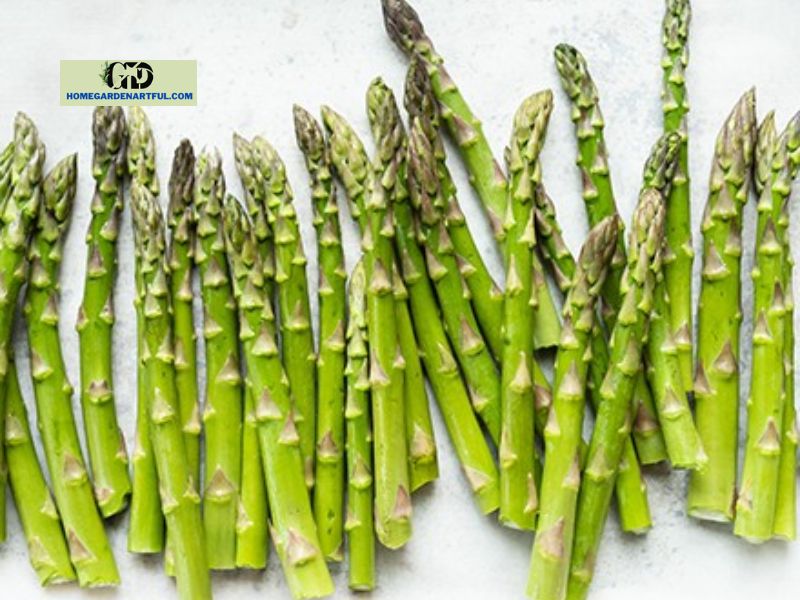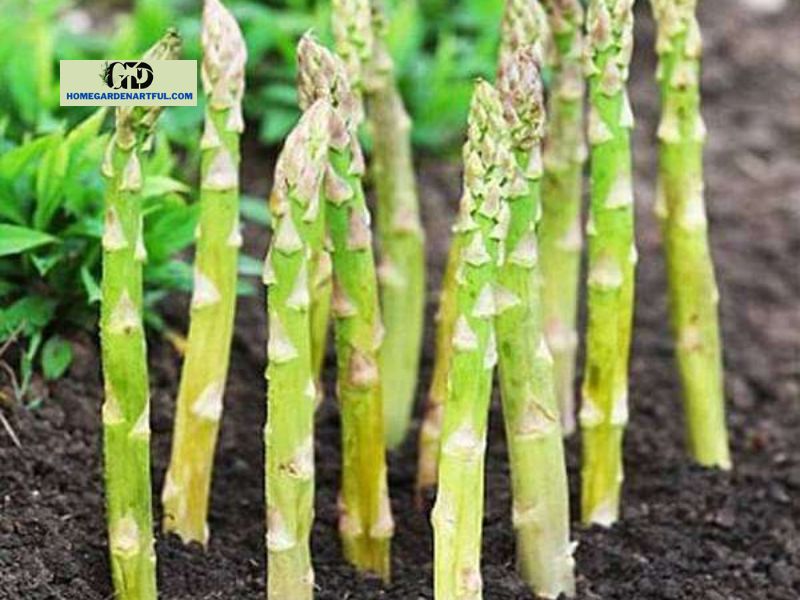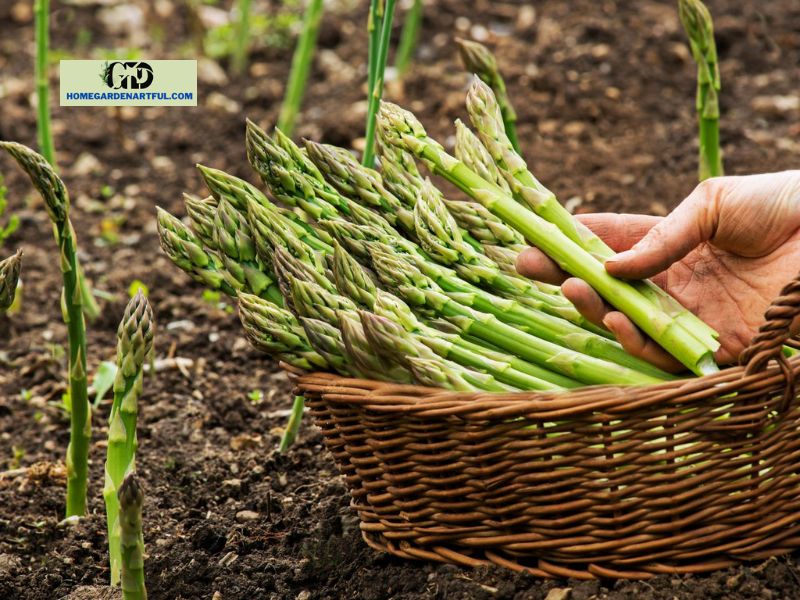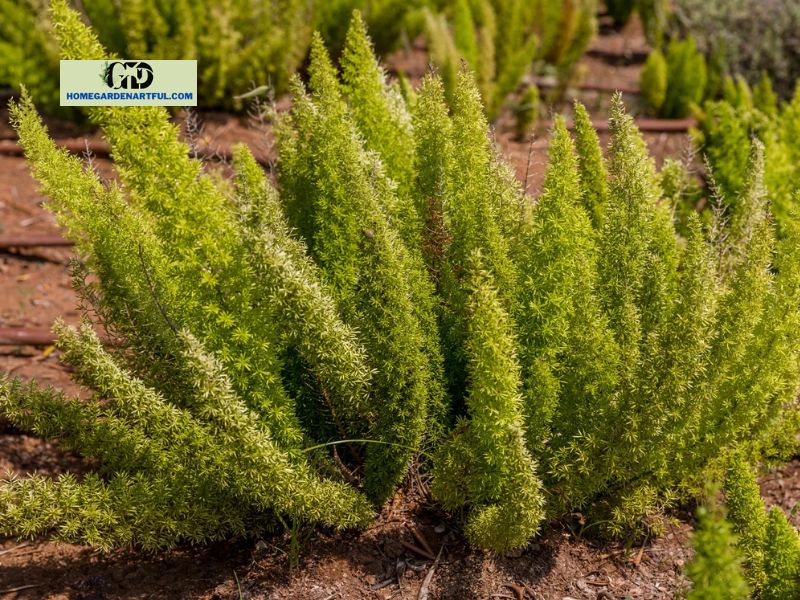Did you know about the Stages Of Growing Asparagus? Do you enjoy asparagus spears but have no idea what they are called? It can also have edible berries, did you know that? You may simply nurture asparagus plants by learning about their life cycle, which can be fascinating.
Savor the delights of cultivating your own asparagus and observing its growth. Homegardenartful.com will give you every juicy detail on the processes involved in cultivating asparagus. You’ll become an expert gardener with this information in no time, able to care for your plants from seed to harvest.
7 Stages Of Growing Asparagus

Growing asparagus is not a simple task; it demands your complete focus, particularly during the initial stages.
Therefore, you can avoid a lot of difficulty (and dead plants) by being aware of all the distinct stages of its life cycle.
1. Planting and Readying the Soil
While asparagus can be grown alone, it also enjoys company, especially from tomato and eggplant plants. Gaining greater knowledge about the many stages of eggplant growth will significantly boost your total yield.
Everything you need to know about growing asparagus, including when to plant it and how to prepare the soil, is covered in this section.
Prior to planting, decide the kind of asparagus you want to grow by considering your demands and objectives. Asparagus comes in both genders, and each has advantages. Male plants yield more because they don’t have to expend energy producing seeds.
Conversely, female plants yield seeds that you can use to sow more asparagus the following year. In order to ensure that we always have enough for consumption and to obtain extra seeds, we typically blend male and female plants.
Additionally, purple and green asparagus are options. They taste identical, but they can give your food some color.
A cool-hardy type that grows well in northern climates is the Jersey Giant. But if you’re looking for a disease-resistant type, Jersey Knight is a good choice because of its strong resistance to asparagus rust, crown rot, and fusarium wilt.
2. Seed Germination
The following phase of an asparagus plant’s growth is called seed germination. The germination process might take two to eight weeks, and it is a laborious procedure.
The asparagus roots form beneath the surface as soon as the seed opens, but you won’t observe any surface growth for a while.
3. Early Growth

The asparagus begins to develop when the crown forms and sends up branches that poke out of the ground.
Being a perennial vegetable, asparagus cannot be picked right away from the time it emerges. The first crop will instead need to wait a few years.
As the plant starts to produce its own food and energy through photosynthetic foliage, asparagus development accelerates once the shoots emerge.
4. Ferning Out
With asparagus, you will only make that error once. I know it’s tempting to select the vegetables as soon as you start to see their ultimate shape begin to form.
Since asparagus cannot be plucked in their first year of growth, you should let them fern out as soon as you observe sprouts.
What’s going on here? In essence, it’s when the asparagus reaches its flowering stage, when the tips open up and the fern-like leaves begin to sprout. That being said, this is advantageous since it encourages your asparagus to grow even more quickly.
This perennial plant creates even more food through photosynthetic processes in its fern-like foliage. The energy generated at this phase is stored in the roots of the asparagus plant and used the following year.
In fact, ferning should be aggressively encouraged during the first and even the second year of asparagus development, so it’s nothing to be afraid of. The new shoots should be trimmed slightly and let to grow and fern out.
5. Entering Dormancy
Don’t be so eager to pluck the asparagus ferns because they will continue to photosynthesize as long as they remain green. Depending on the local environment, this can happen in the late fall or early winter. Leave them till they turn brown.
During this period, asparagus goes into dormancy, which prevents the leaves from photosynthesizing. However, this also helps asparagus bugs overwinter, which is not something you want. You should get rid of any dead leaves before it affect your fresh asparagus because they can harm the yield the following year.
6. Plant Growth
The next spring, the asparagus spears get harder as the plant awakens. In the early spring of the following year, you can apply some compost as a side dressing to the plant.
Extra nutrients support the growth of your plant and guarantee a larger harvest the following year, or even the year after.
Furthermore, giving your plant two years to grow and fern out strengthens the root system, which is very advantageous in the long run.
7. Harvesting

Harvesting is the next step in the asparagus growing process. While some growers—including us—harvest a few spears in the second year, asparagus is generally ready for harvesting the third year after planting.
If you want your asparagus to continue producing the next year, you should harvest them very carefully and risk-free in their second year of growth.
This implies that you should let the remaining spears fern out and produce enough energy for the growth of the following year and that you may harvest a maximum of half of them.
It’s party time when the third year rolls around! Since the plants have established themselves and don’t require much energy to endure dormancy, you can harvest all of the spears that are roughly 10 inches (25 cm) long. You can begin enjoying the results of your labor as early as mid-April, and the harvesting process takes roughly six weeks.
By the end of May, you should stop gathering asparagus spears and let the remaining spears fern out so they can create enough energy and food to survive hibernation.
When the fourth year finally arrives, you can begin spear harvesting for two months, with the season beginning in mid-April.
Conclusion
You now understand the nine stages of asparagus growth and when to plant, harvest, and let them fern out thanks to this article’s thorough explanation of each one.
To help you plan your own asparagus garden and prepare a delicious asparagus dinner for your guests and family, we have also included a care guide.
In order to help you prevent them, we have provided a list of some of the most prevalent pests and illnesses that you could run into when cultivating this nutritious vegetable.


